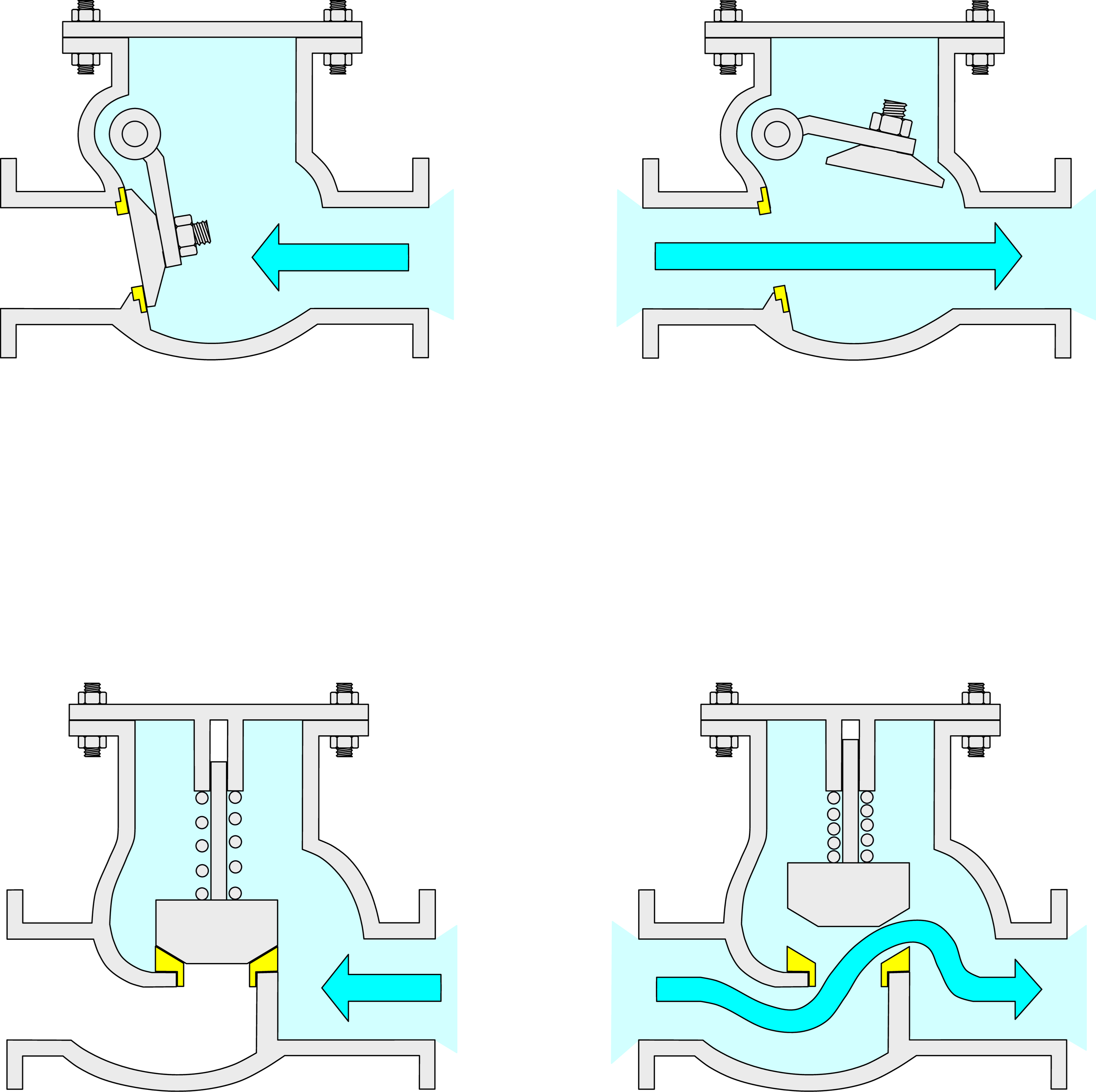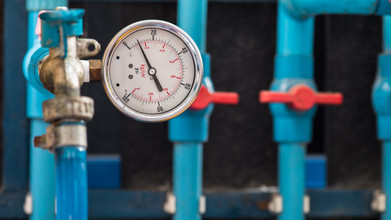How Do Check Valves Affect Water Pressure in the Piping System?
Posted by Russ Bailey on Jun 25th 2021
Check valves also known as "one-way" valves are autonomously operated unidirectional valves that allow fluid to flow in a singular direction, thus reducing or preventing backflow. They are created with some key factors in mind, like the fluctuating nature of the closing assembly and pressure changes in the fluid flow upon closing of the flow restrictor. One of the most important considerations to be taken while installing a check valve is the orientation in which it is to be installed.
Various accessories such as hinges, pistons, screens, and flaps are employed in the different types of check valves. In simplistic terms, however, a flap of some kind is used to allow flow in one direction while restricting it in the other, hence the name “one-way valve”. How the flap is adjoined to move with the fluid flow is where most check valves differ. It may be supported with a spring (double door check valves), with help from the force of gravity (swing check valves), or with a combination of the two. Types of check valves include the ball check valves, Y-type check valves – sometimes used in conjunction with a swing or ball check valve – and foot valves, which incorporate a screen and, as the name implies, are used at the end of a pipeline or the foot of it.

Water Flow and Pressure in Piping Systems
Water pressure is usually defined as the force exerted on water to push it through the pipeline. It may be naturally (gravity) or artificially (pumps) created. Water flow, on the other hand, is the amount of water running through a pipe at any given time. To understand their relationship, let us take the diameter of a pipe under consideration. Given the same source, a wider pipe will allow more water to flow through it, but the water will flow more slowly, due to less pressure exerted on it. However, the greater the amount of water flowing, the greater the pressure will be as well, and vice versa. Therefore, the flow-pressure relationship is not a simple one.
You should be aware of the cracking pressure of the water check valve you are going to use. This is the precise upstream water pressure at which the valve ‘cracks’ open, allowing a measurable flow of fluid through. The cracking pressure is affected by the force required to open the check valve, which may depend on the tightness of the spring or the weight of a gravity-operated flap.
While overall system usage plays a significant factor in the pressure drop taken across a check valve, three key factors pertaining to the implementation of the valve itself influence this calculation: the specific gravity of the fluid, the flow rate of the media, and the flow coefficient, also known as the Cv characteristic, of the specific valve in question. Increasing the flow rate of the media through the valve will yield a higher pressure drop. Likewise, increasing the specific gravity of the flowing media will also lead to a higher pressure drop. Conversely, a larger flow coefficient equates to a lower pressure drop.
Generally, gravity-supported water check valves, such as swing and tilting disk check valves, are the best to use horizontally and for low water pressure situations, as the force required to open the restricting flap is minuscule. However, they may be problematic in vertical applications. The valves employing spring force, however, require higher water pressure to function, as they come with the capability of a tighter backflow resistance, and can be affixed in either orientation. Restrictor water check valves are the most optimal for changing water pressure situations, due to their multi-spring assemblies that give you the ability to set the cracking pressure of your choice.
Related Products
[[3115, 104, 193]]
Problems with check valves
With the many benefits that check valves provide, they also bring with them some problems that, if not solved timely, have the potential to cause massive damage to the piping systems.
Depending on the fluid passing through the valve, minerals and particulates can build up on and around the valve, especially the closing assembly, preventing the valve from closing properly and disabling it from stopping reverse flow. This would defeat the entire purpose of installing a check valve. Therefore, the flowing media should be given attention to, and the check valves should be maintained or replaced accordingly.
Chemical compatibility is another vital consideration. The check valve material, both body and valve seat, must be compatible with the media that is flowing through it. Incompatibility can lead to the complete destruction of the valve. For example, salt water in a piping system will damage steel check valves but is compatible with PP valves.
Reverse flow may also become an issue if the check valve is not sufficiently fast at closing, or if it is oversized. Similarly, if the valve is not sufficiently fast at opening, the flow of water (or other media) can be restricted altogether, increasing water pressure and damaging pumps and other fittings in the piping system.
Water hammer proves one of the most common problems afflicting piping systems and represents a significant factor one should consider when selecting the appropriate check valve for an application.
Water hammer occurs when some influencing factor, such as pump shut off or point of use closures, forces the flowing media to stop or change direction, creating a hydraulic shock wave that ripples through the piping potentially damaging equipment, instrumentation, or even the piping itself. Choosing the right check valve for an application prone to water hammer can help mitigate these deleterious surges.
Why valves fail – and how to fix them
As highlighted above, a failing check valve can cause immense damage to the piping equipment. However, valves have telltale signs that, if given attention to, can prevent damage over time.
Some initial signs to look for are excessive noise, vibration, and wear and tear of internal valve components. Reverse flow and, in extreme circumstances, water hammer are also strong indications of a failing valve. These challenges can be avoided at first but may also need remedial interventions.
To prevent valves from failing, important considerations to take are appropriate sizing, reaction speeds, and chemical compatibility. Installing filters where feasible will also help prevent buildup and increase the longevity of your check valve.
In addition to the preventive maintenance measures discussed above, corrective measures may also be required if the valve is beyond repair. Replacing the valve with a new one of the same type may be appropriate, but sometimes there’s a need to replace the valve with another one altogether, perhaps due to considerations regarding size, type, closing assembly, or reaction speed.
Need guidance in determining the appropriate check valve for a specific application?
The experts at ValveMan have the knowledge and experience to help. Shop ValveMan.com today!

 888-825-8800
888-825-8800









